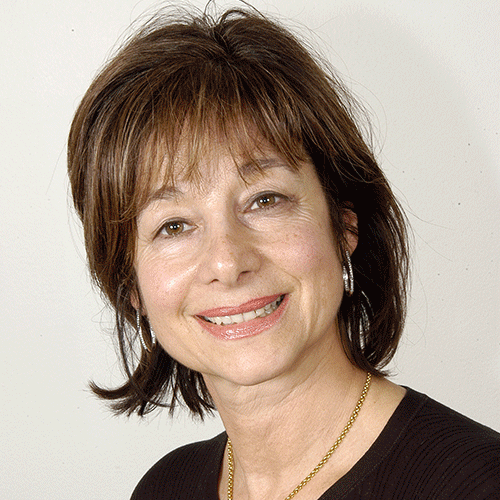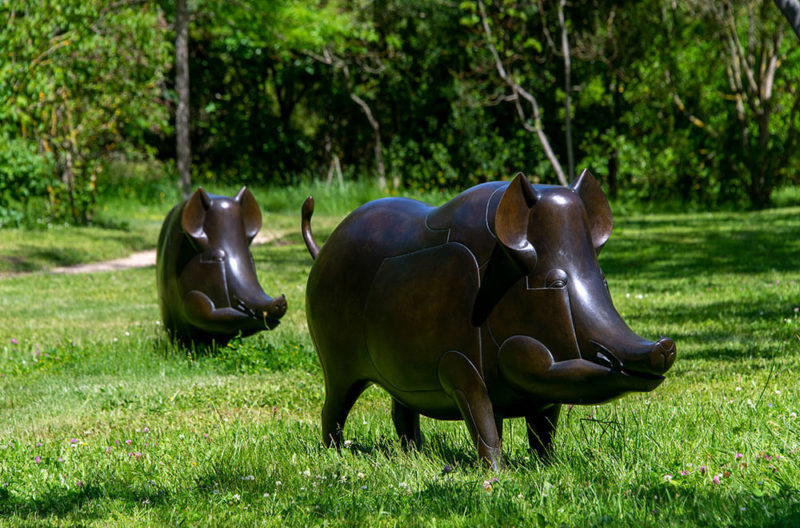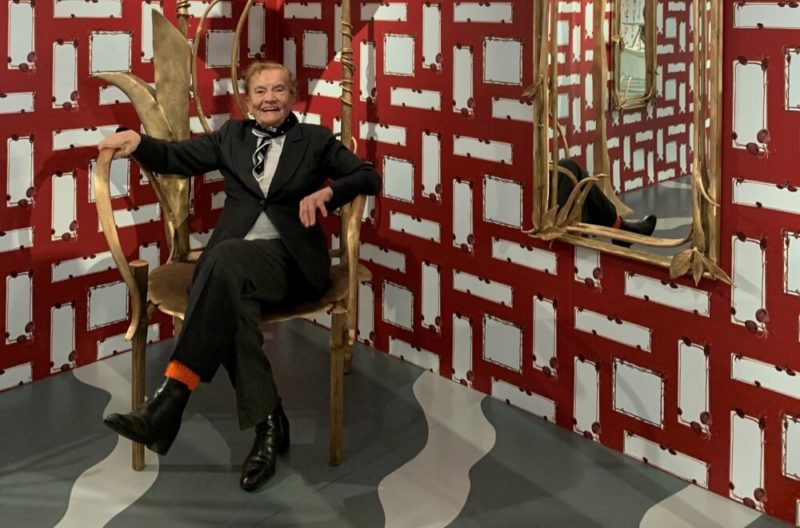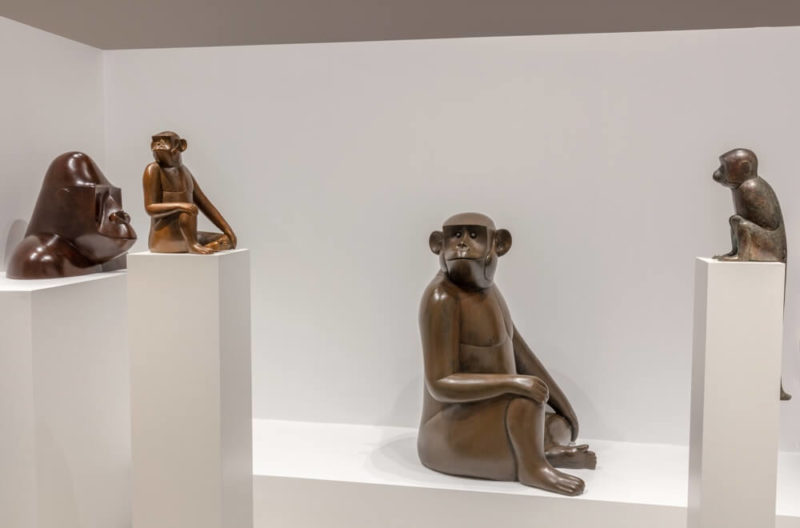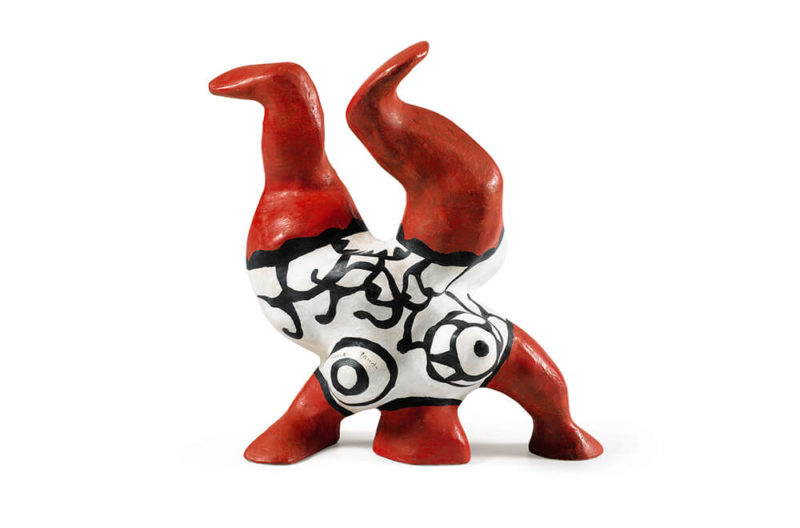Sotheby’s: Collection Dorothée Lalanne / SALE PREVIEW
As the legendary French designers continue their meteoric market rise, Sotheby's bring new pieces to collectors.
Sotheby’s Paris
4th November 2021
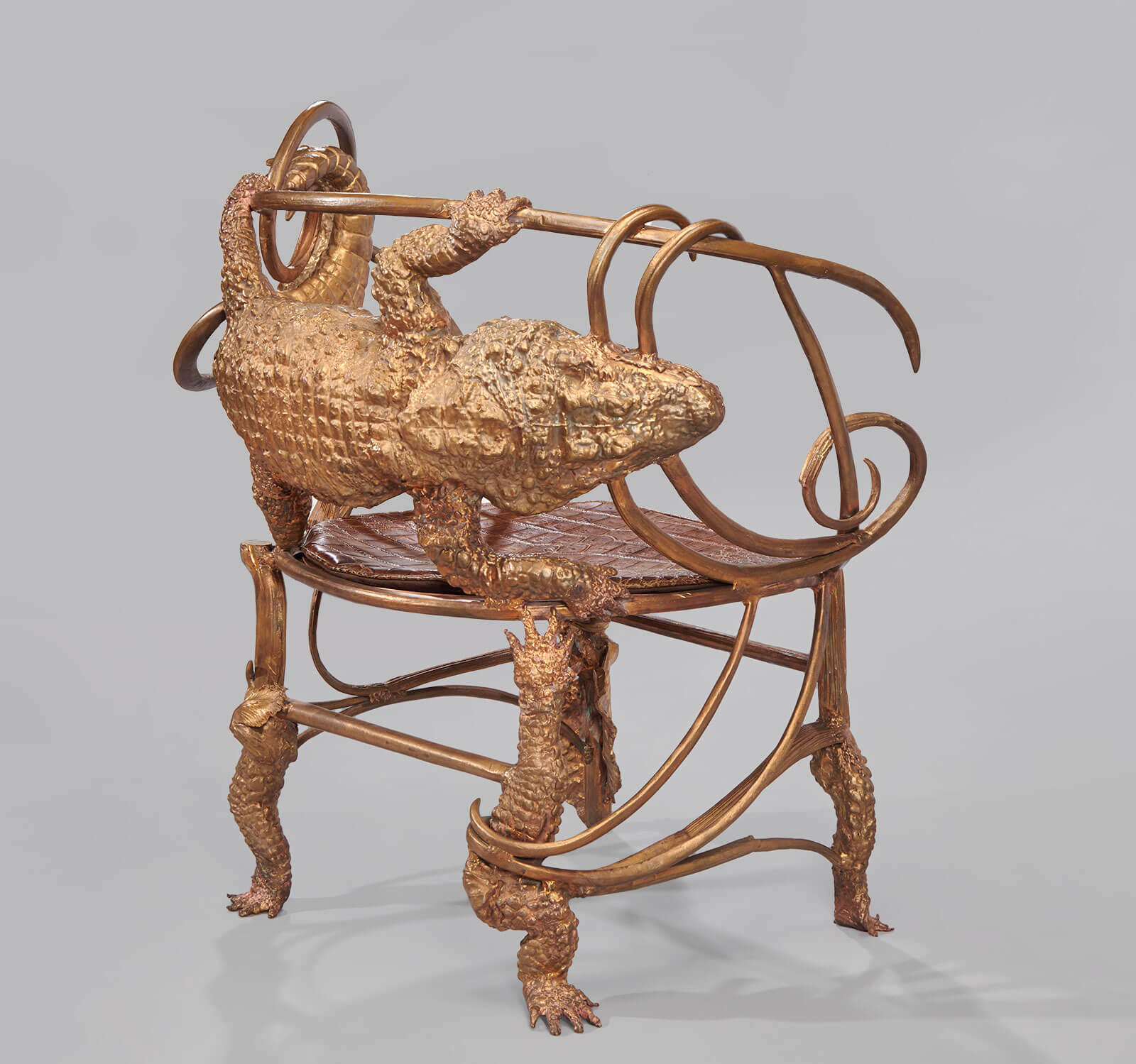
Claude Lalanne, ‘Crocodile II’, 1987/2005
COURTESY: © 2021 Artists Rights Society (ARS), New York / ADAGP, Paris / PHOTOGRAPH: Clark Art InstituteT Clark
CLAUDE LALANNE (1924-2019) designed jewellery, sculpture and furniture inspired by her garden, twisting gilded tendrils, twigs and leaves into chairs and chandeliers – even developing her own electrotyping process to metamorphose cabbage heads into metallic art.
François-Xavier Lalanne (1927-2008) transposed the animal kingdom into surrealist furniture for house and garden, zoology with hidden functions. If you wanted to sit on a sheep, pour drinks from a grasshopper or take a bath in a bronze hippopotamus, he would be the go-to man.
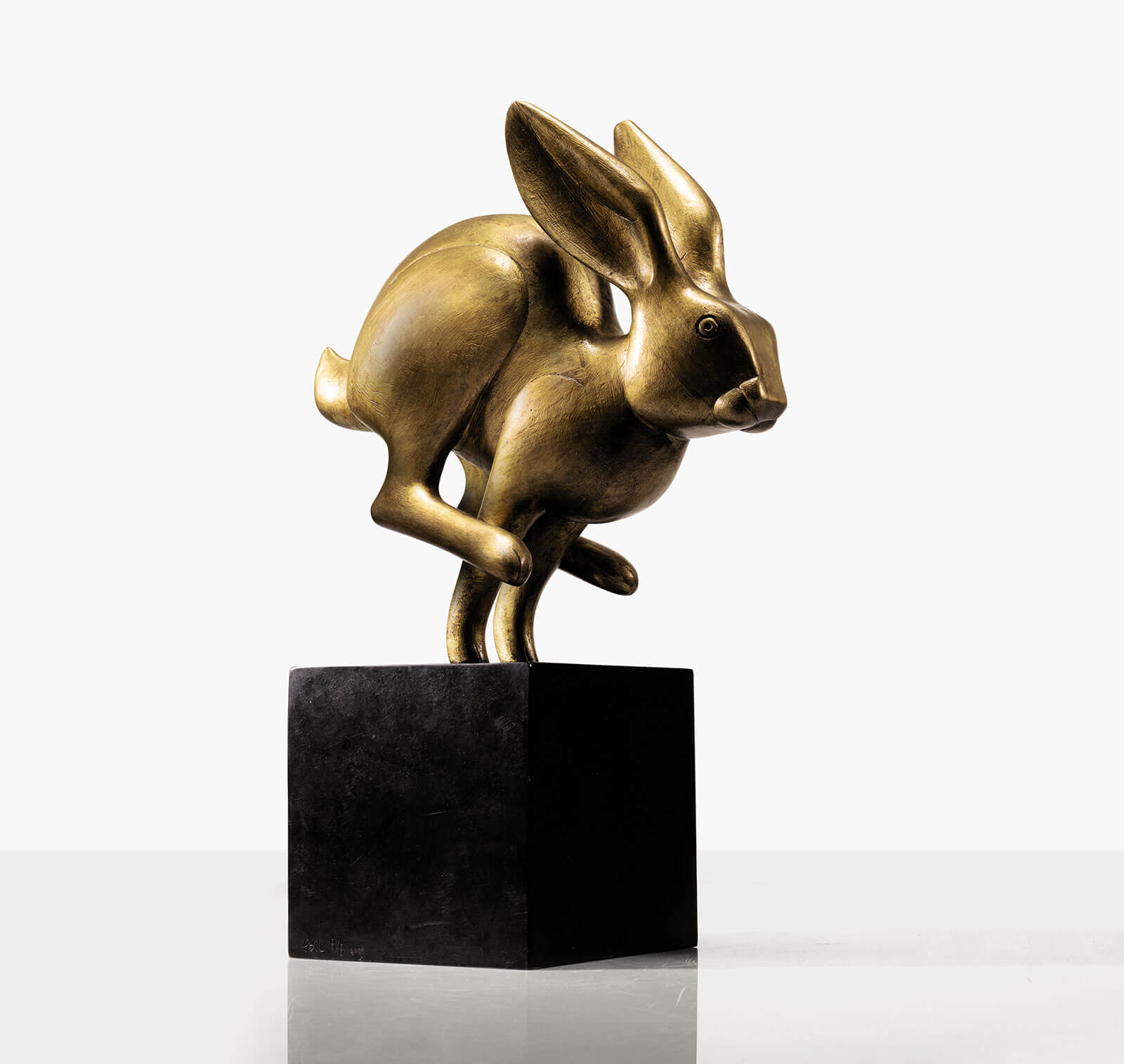
François-Xavier Lalanne, ‘Lièvre II’, 2000
COURTESY: Sotheby’s/ ArtDigital Studio
On November 4th, Sotheby’s Paris saleroom will auction 81 lots of sculpture and sculptural furniture by both artists, the climax of a three-part sale of more than 200 works from the private collection of their daughter Dorothée. Already on offer online, from October 25th to November 5th, are 52 pieces of jewellery by Claude and 81 preparatory sketches, gouaches and prints by François-Xavier.
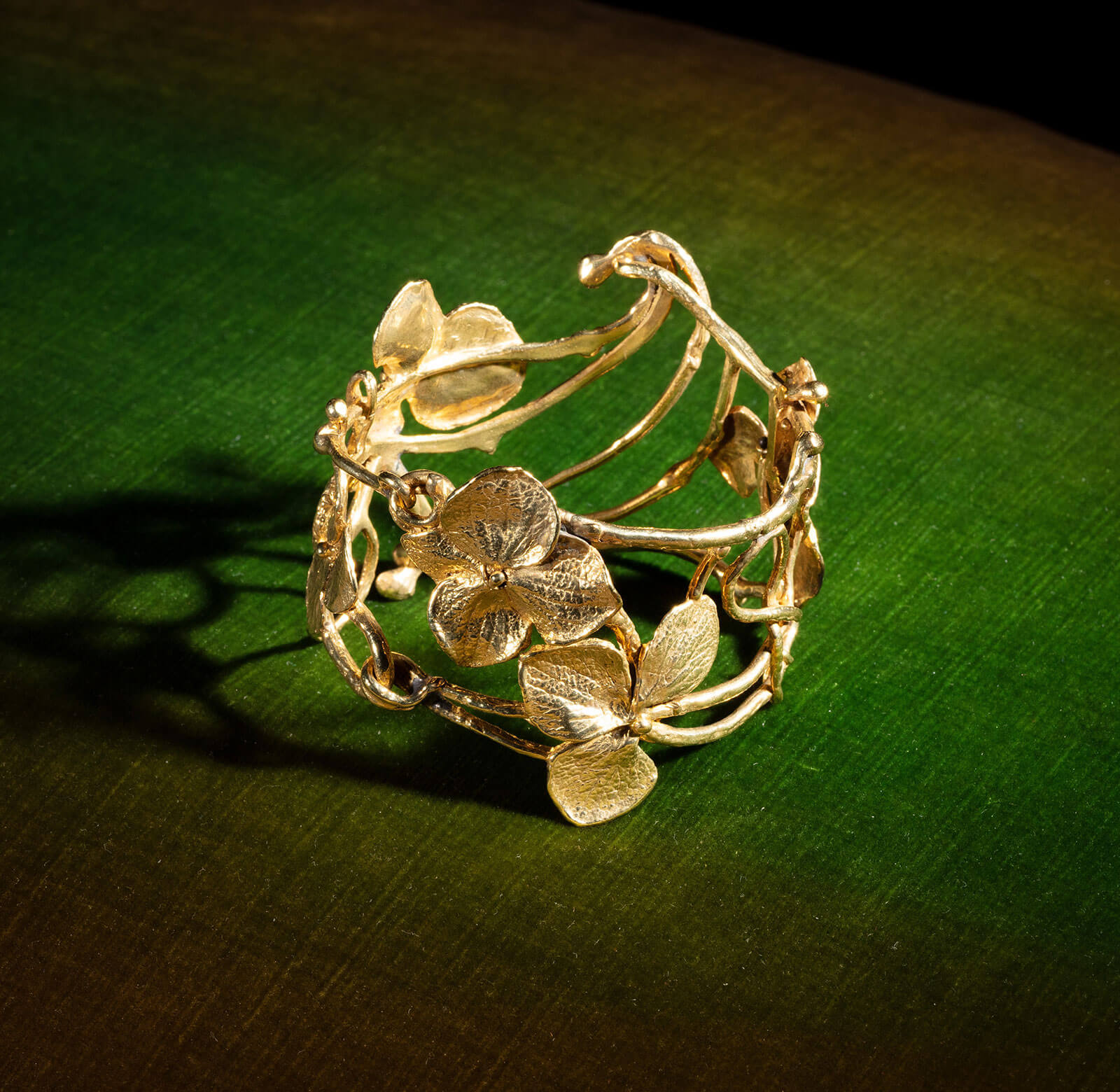
Claude Lalanne, ‘Bracelet Entrelacs’, circa 1990
COURTESY: Sotheby’s/ ArtDigital Studio
Lots range from a modest ‘Cat Mat’ by François-Xavier estimated at €6,000-€8,000, or ‘Sven’ cutlery set by Claude (€20,000-€30,000) to a François-Xavier bronze ‘Minotaur’ estimated at €1-1.5 million. Other top lots include a François-Xavier gilded ‘Big Carp’ (€300,000-€500,000), a Claude ‘Crocodile chair’ (€500,000-€700,000) and three giant gilded sheep, ‘Les Moutons de Peter’ (€700,000-€1 million).
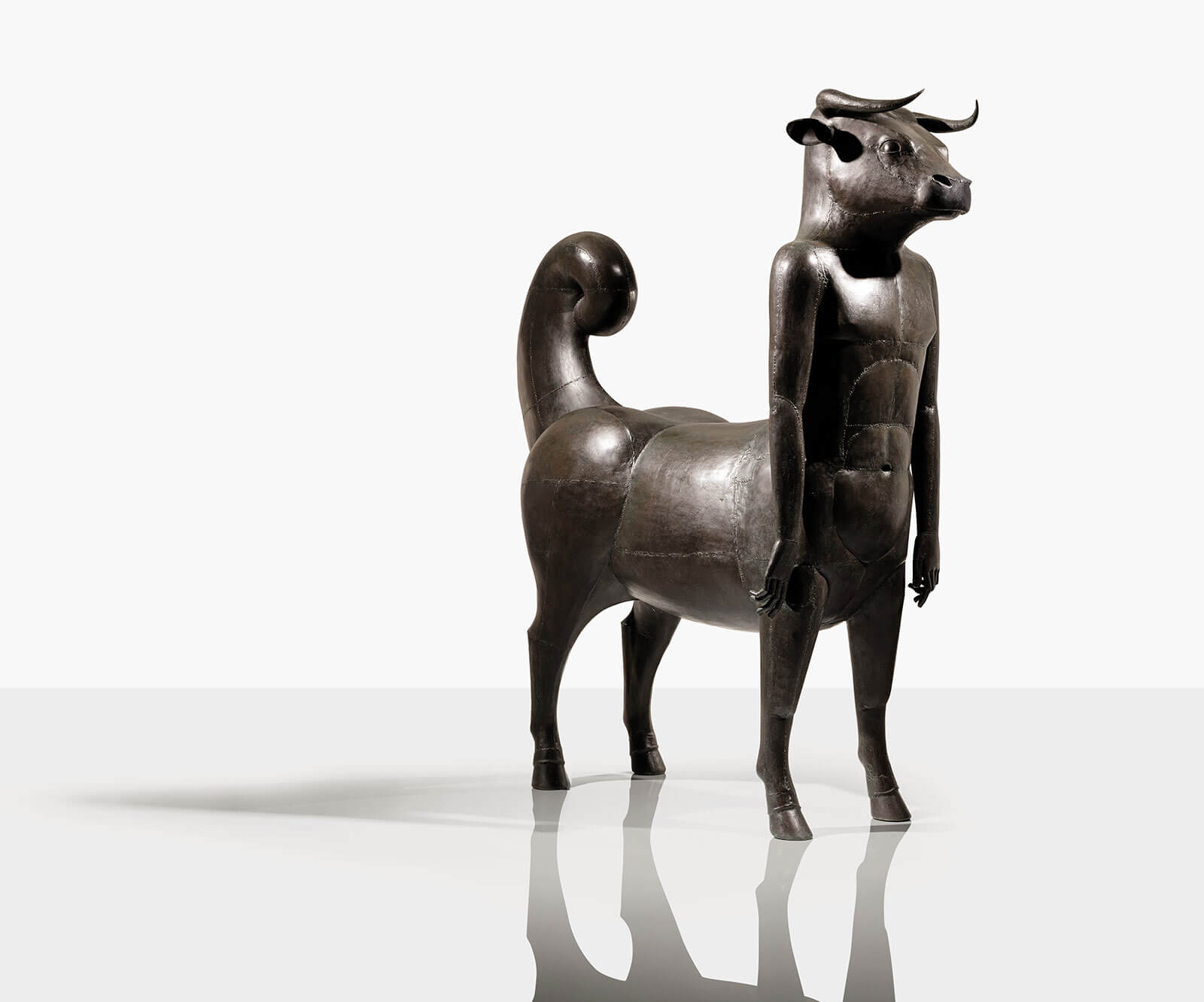
François-Xavier Lalanne, ‘Le Minotaure’, 2004
COURTESY: Sotheby’s/ ArtDigital Studio
However vertiginous the estimates, bids are likely to go higher. On October 3rd a Lalanne monumental bronze, ‘The Rape of Europa’, sold at Osenat Fontainebleau for €1.24 million – 50% above its estimate. In September, Christie’s sold a bronze and copper ‘Vegetal Structure’ chandelier made by Claude for the couturier Hubert de Givenchy for a record €3.7 million. In 2019 a blockbuster Lalanne sale at Sotheby’s brought in an eye-watering €91.3 million.
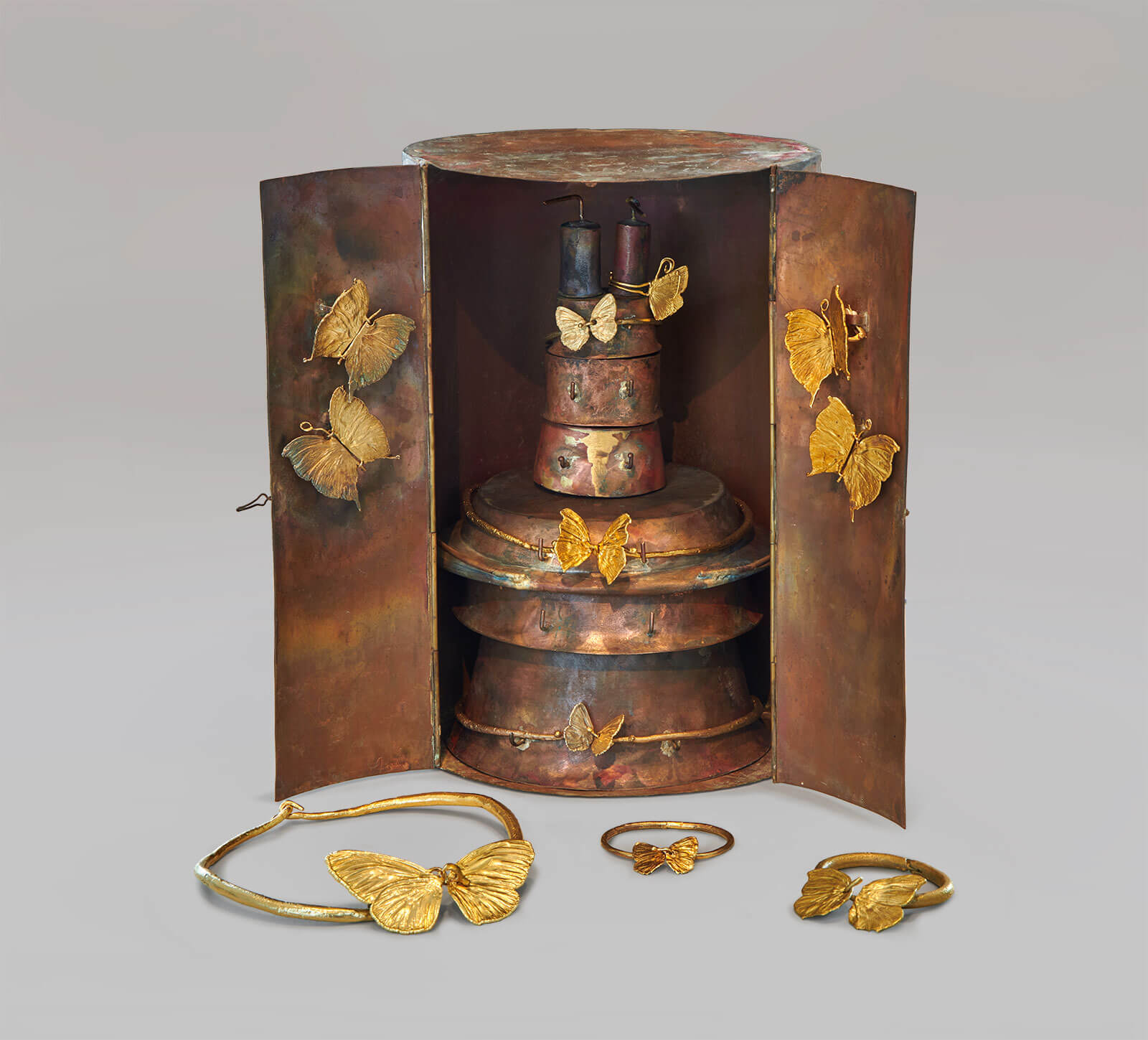
Claude Lalanne, ‘Le Cabinet papillons’, circa 1964
COURTESY: © 2021 Artists Rights Society (ARS), New York / ADAGP, Paris / PHOTOGRAPH: Clark Art InstituteT Clark
Yet, until quite recently Les Lalanne – as they branded themselves – were barely known beyond the society sophisticates of “Le Tout Paris”. Starting from their first joint show in 1964, clients included French Presidents Claude Pompidou and Jacques Chirac, 1960s jet-set playboy Gunter Sachs, fashion icon Yves Saint Laurent and outré interior designer Peter Marino. In the wider art world, however, their name meant little more than François-Xavier’s ubiquitous sheep. The French cultural hierarchy ranked “decorative” beneath “fine” art. In the post-modern era of abstraction, deconstruction and conceptualism, decorative and figurative were pejorative terms. Critics dismissed them as purveyors of decorative whimsy to the wealthy.
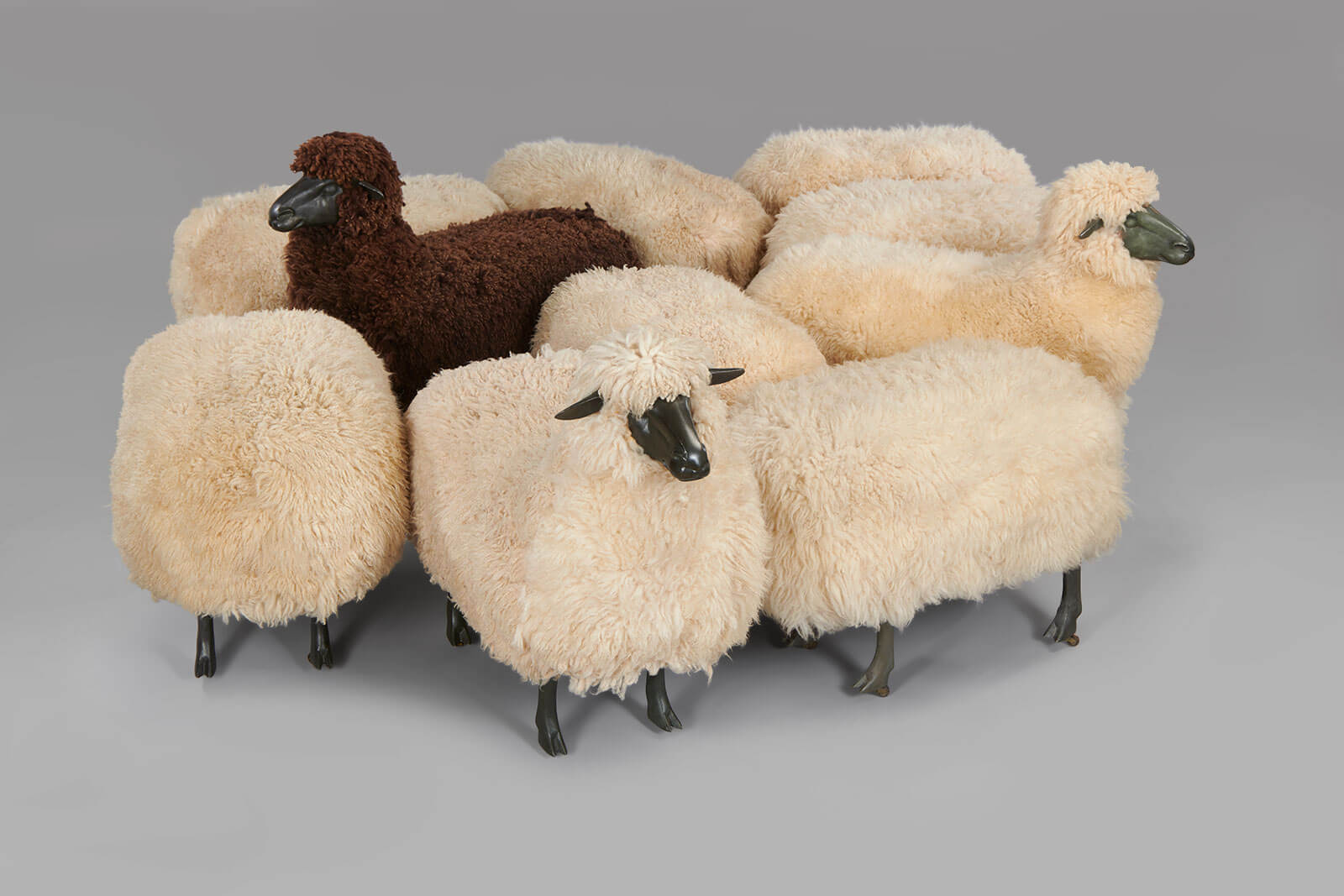
François-Xavier Lalanne, ‘Moutons de laine’, 1968-1971
COURTESY: © 2021 Artists Rights Society (ARS), New York / ADAGP, Paris / PHOTOGRAPH: Clark Art InstituteT Clark
The turning point came with the 2009 sale of Saint Laurent’s private collection by his partner Pierre Bergé, which brought some of their finest work into public view and triggered a rising wave of popular discovery. “Where people used to think of their work as ‘mignon’ [cute], now they say, ‘No, it’s art’,” says the Parisian gallery owner Jean-Gabriel Mitterrand.

Claude Lalanne, ‘Banquette Les Berces Adossées’, 2015
COURTESY: Sotheby’s/ ArtDigital Studio
With wider exposure, recognition of their work has gone global: “The market is no longer purely French,” says Florent Jeanniard, European Design Director at Sotheby’s Paris, in an interview ahead of the November 4th sale, “It’s very international – US, South African, Asian, as well as European.”
This summer, Americans cut off from Paris by Covid have enjoyed ‘Nature Transformed’, the first Les Lalanne museum retrospective in the United States in over 40 years, at the Clark Art Institute in Williamsburg, MA.
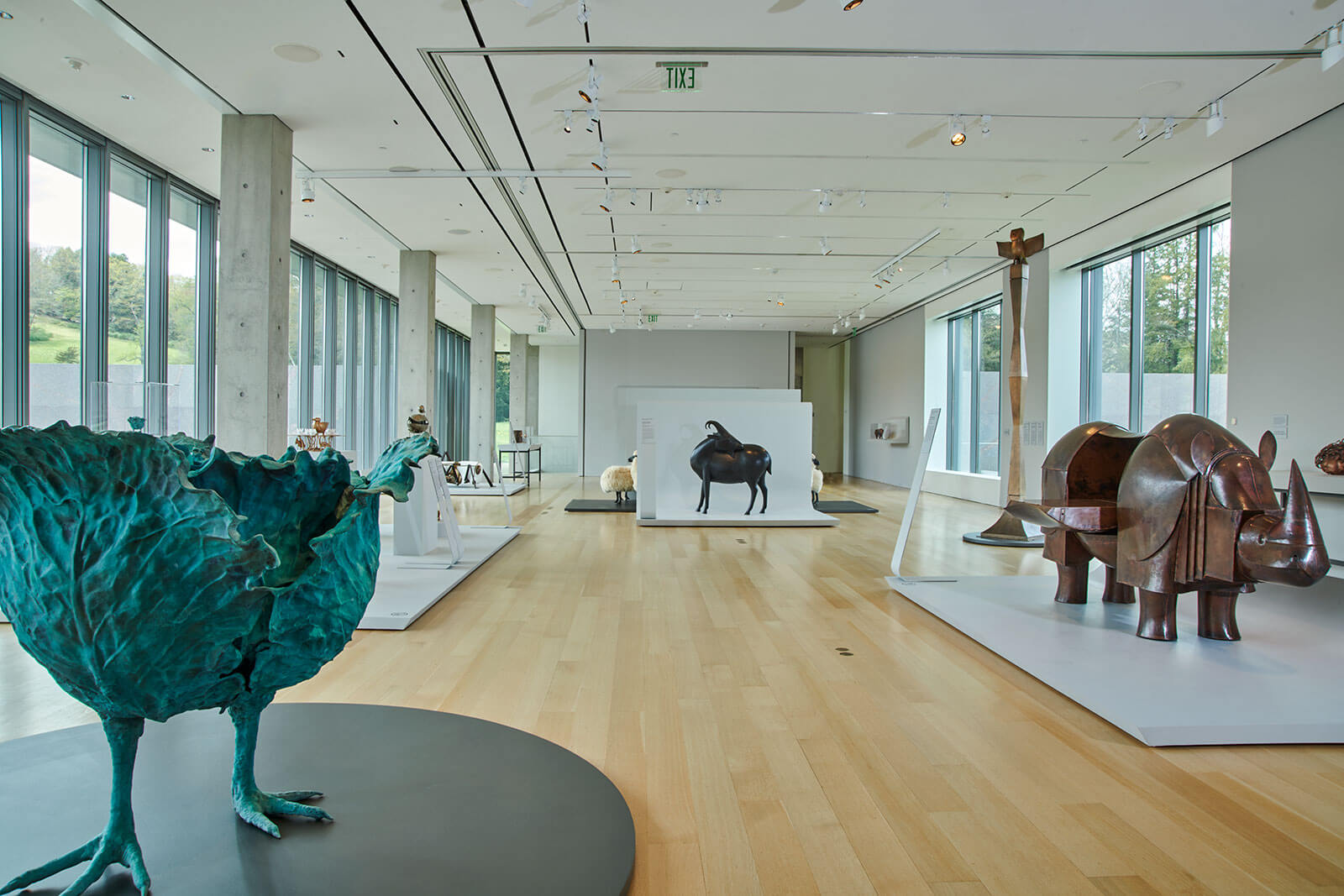
Installation view, ‘Nature Transformed’, Clark Art Institute
COURTESY: © 2021 Artists Rights Society (ARS), New York / ADAGP, Paris / PHOTOGRAPH: Clark Art InstituteT Clark
“The response has been genuinely enthusiastic,” says the Clark’s director, Olivier Meslay. “September has been one of the best months ever for visitors to the museum. Les Lalanne have been a surprise for many – but a very enjoyable one!” Meslay adds, “It’s still a mystery for me why these artists who were liked and recognised by sophisticated and influential collectors were really unknown by the general public until ten years ago.”
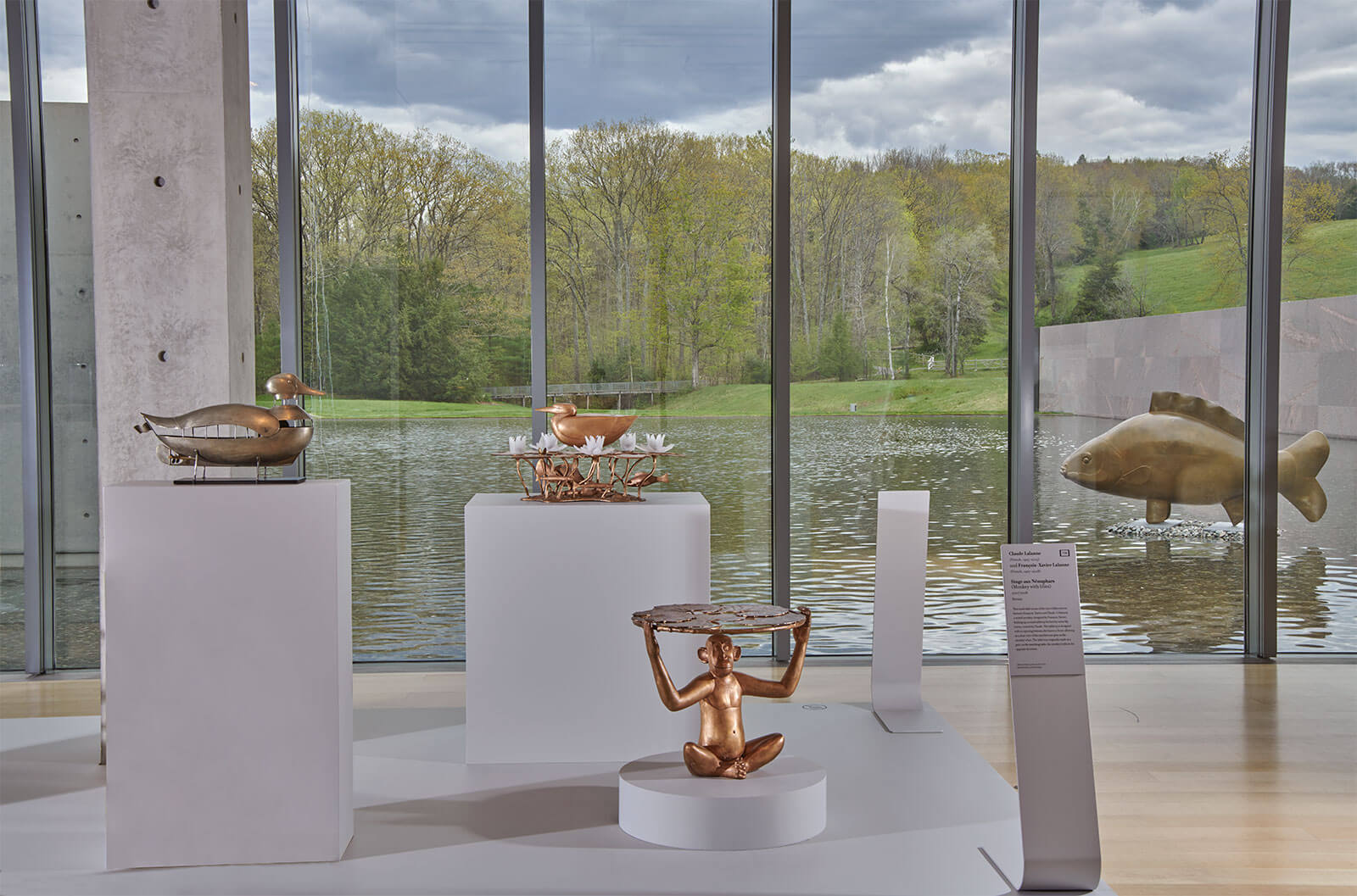
Installation view, ‘Nature Transformed’, Clark Art Institute
COURTESY: © 2021 Artists Rights Society (ARS), New York / ADAGP, Paris / PHOTOGRAPH: Clark Art InstituteT Clark
Part of the answer lies in the erosion of the distinctions between fine art, decoration, design and fashion, allowing Les Lalanne to emerge from the niche category of decorative arts and crafts onto centre stage. Despite the dearth of American tourists, about 3,500 people a day have flocked to the Chateau de Versailles to admire 65 Les Lalanne sculptures displayed by Mitterand in the Trianon park – including a see-through cow and a flock of the inimitable sheep, grazing where Marie-Antoinette played milkmaid and shepherdess with her ladies-in-waiting. “Visitor numbers to the Trianon have been up 50% on 2019 (the last year before the pandemic),” says Mitterrand, which has led to a month-long extension of the show.
A fundamental societal shift may also be playing into their rediscovery. In a world of existential environmental concerns – from Extinction Rebellion to the COP26 climate change conference – Les Lalanne’s shared passion for nature chimes with the zeitgeist. “They were always interested in the natural environment,” Meslay says, “What 40 years ago was seen as whimsical and eccentric is an important part of their appeal … now that we are more attentive to nature.”
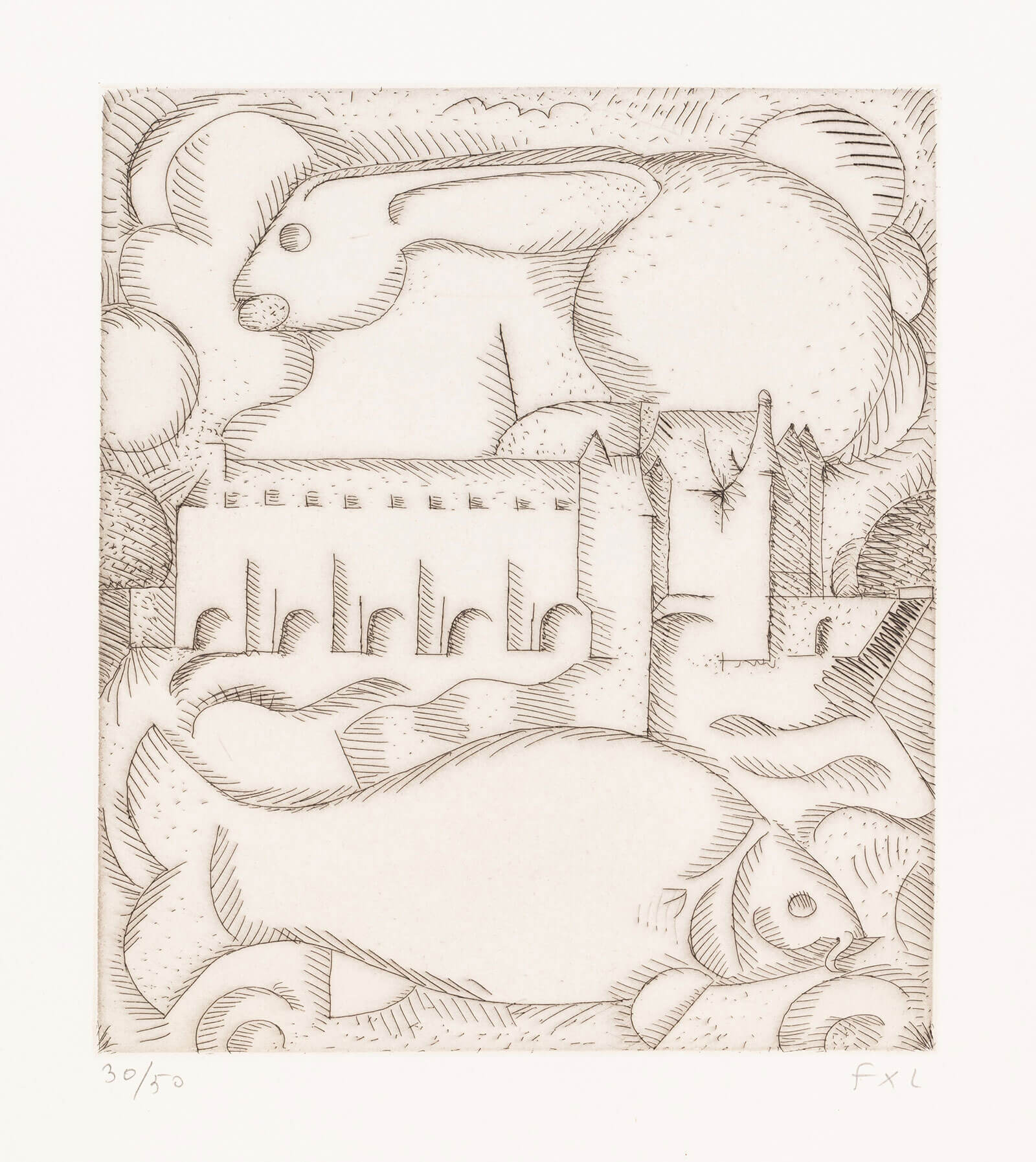
François-Xavier Lalanne, ‘Lapin et Poisson à Chenonceau’, 1991
COURTESY: Sotheby’s/ ArtDigital Studio
Their work also chimes with the rejection of consumerism, argues Jeanniard. “They were not just great artists, they had a conscience of the problem of over-consumption. Their work, it’s useful as well as decorative. Today, there’s a general consciousness of the problem of overproduction – we can’t go on living like that, can’t go on wasting.”
Mitterrand doesn’t altogether buy into that narrative. “Environmentalism is a bit anti-capitalist,” he says. “The art market is inscribed in capitalism. The susceptibility of collectors to Les Lalanne predates the fashion for ecology.”
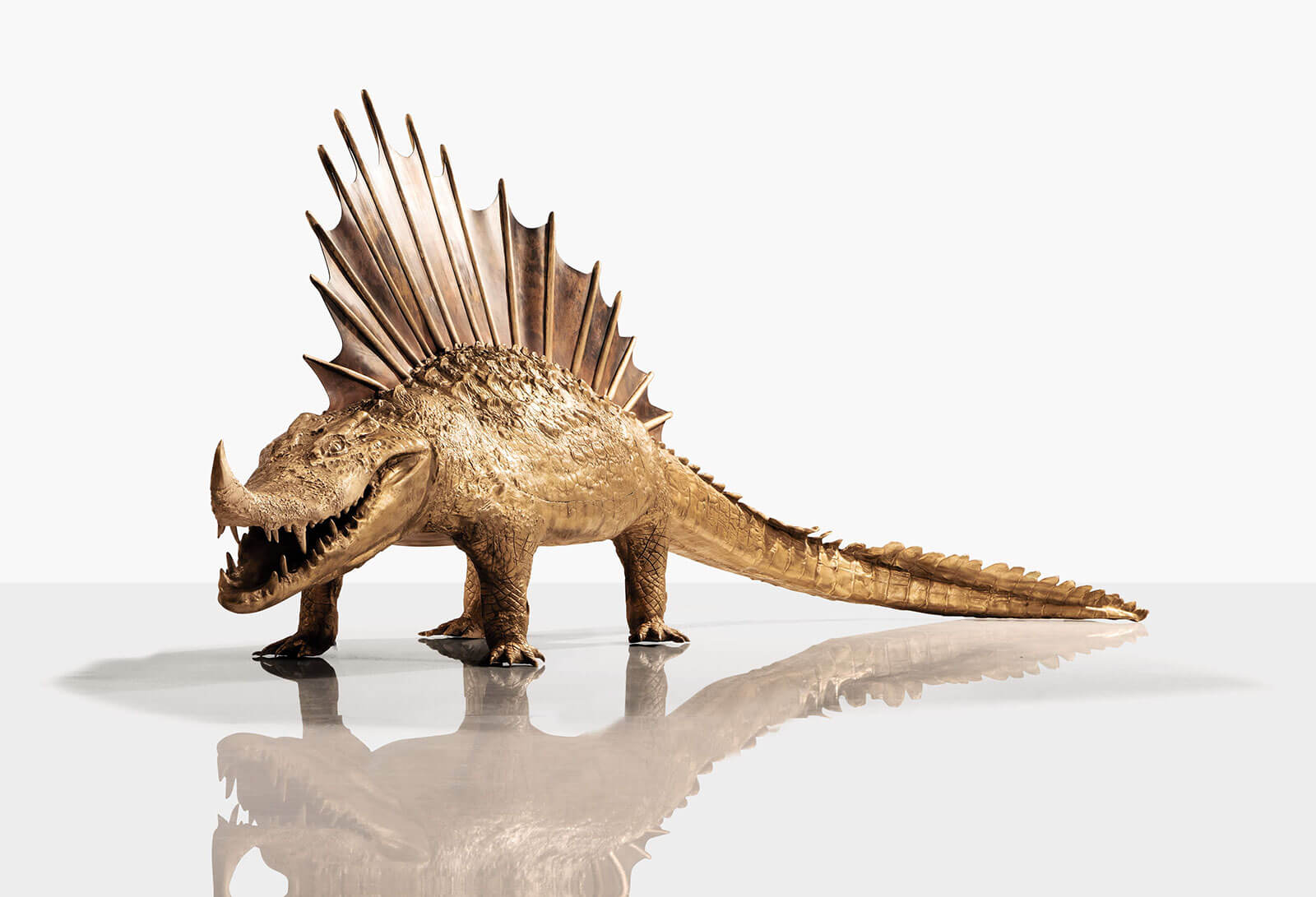
Claude Lalanne, ‘La Femme du Crocodile’, 2013
COURTESY: Sotheby’s/ ArtDigital Studio
And for all its popular appeal it is true that Les Lalanne remains a luxury brand – as illustrated by the newly opened Samaritaine Cheval Blanc. A Peter Marino-designed, Bernard Arnault-owned addition to the ranks of Parisian boutique/palace hotels, it boasts Les Lalanne furnishings including a gilded Claude Lalanne stairway built into its 1,000 square metre “Quintessence” penthouse suite.
A stairway, you might think, is just a means to an end: “But what matters is not the use, but the poetry of their art,” says Mitterrand.
Collection Dorothée Lalanne | Claude & François-Xavier Lalanne takes place at Sotheby’s Paris at 14.30 CET, 4th November 2021.
